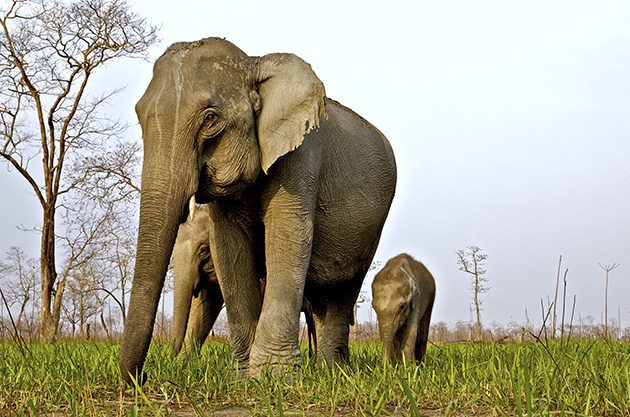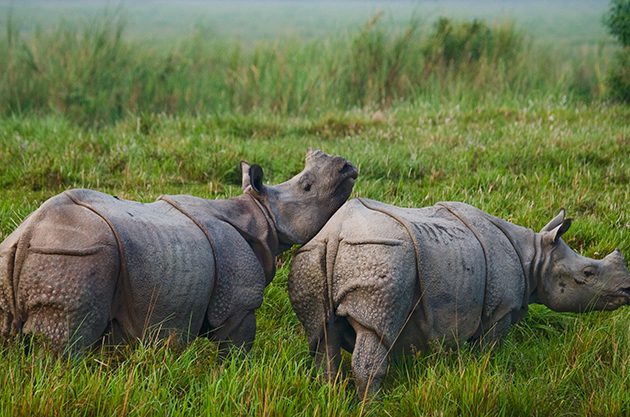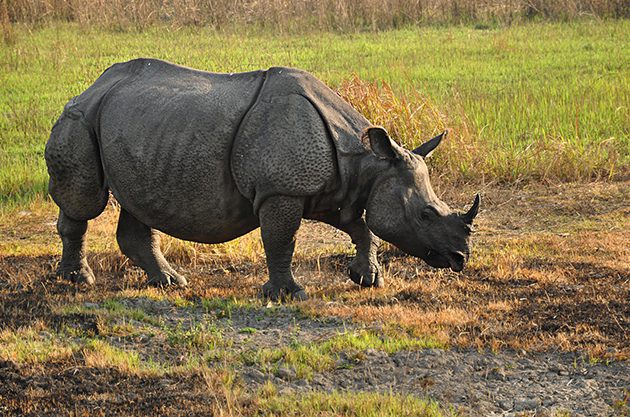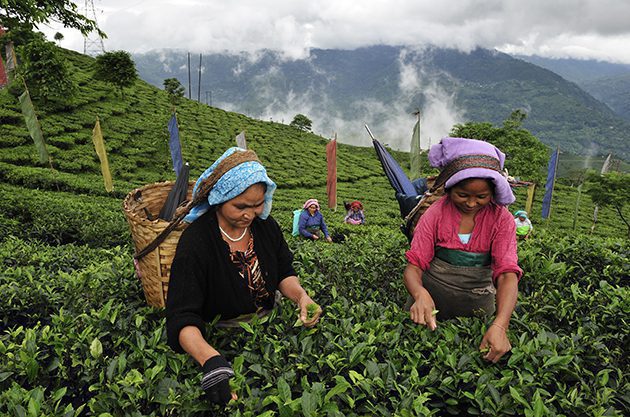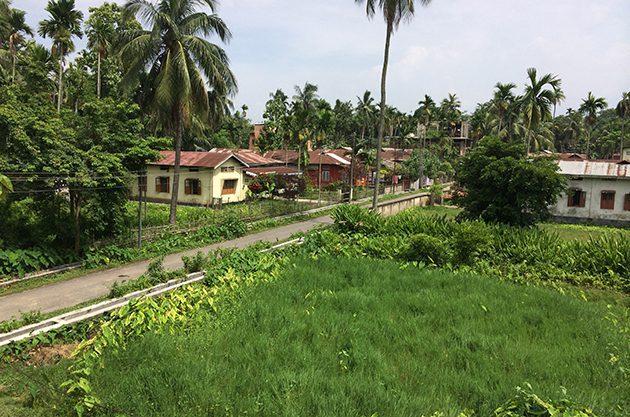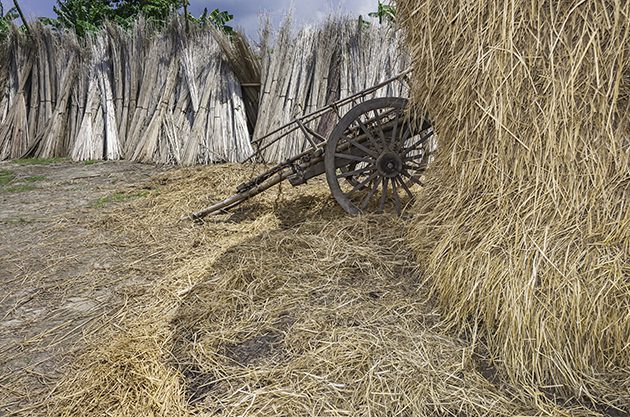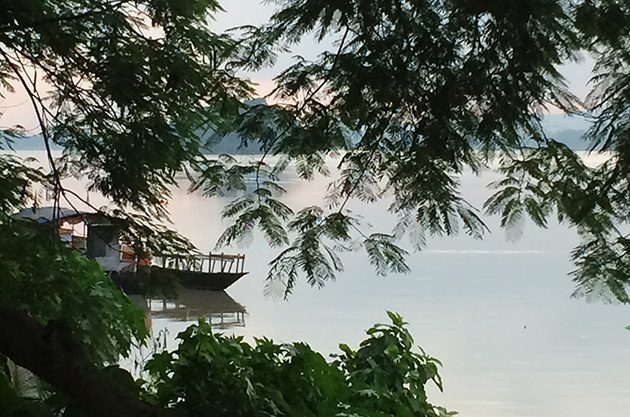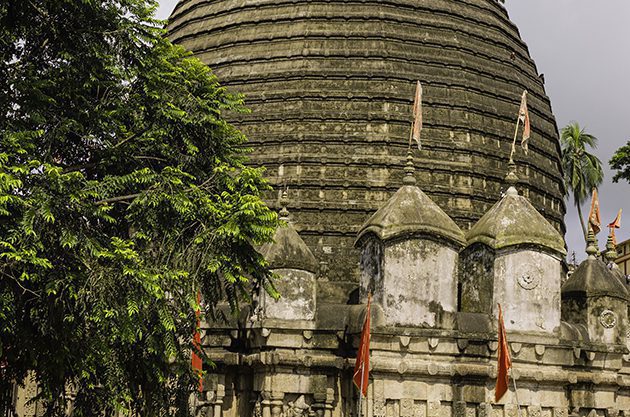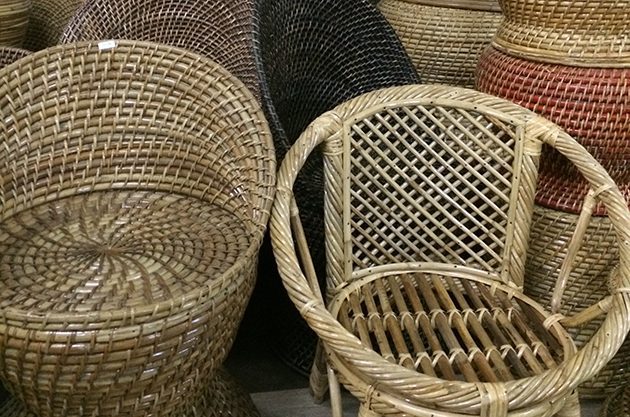The North-East Indian state of Assam is home to the world’s largest population of one-horned rhinoceros – it’s also a land of mysticism, legends, chillies and tea. Anushka Patodia pays a visit to India’s tea country.
Let's explore Assam
The North-East Indian state of Assam is home to the world’s largest population of one-horned rhinoceros – it’s also a land of mysticism, legends, chillies and tea. Anushka Patodia pays a visit to India’s tea country.
“Time for tea,” called out the server at the majestic tea estate I was sitting in. On a regular day this line would perk me up instantly, but because it was mentioned in tea country, it took on another significance altogether. Tea country in India is Assam, the most accessible of the “seven sister” states of North-East India.
Four days ago since I had landed in Guwahati, the Assamese capital, and the gateway to the North-East, a region known for its exotic culture, mysticism and one of the world’s spiciest chillies, the bhut jolokia. (For context, it is 400 times hotter than Tabasco and measures more than 1 million Scoville heat units.)
Guwahati has North-East’s only international airport, the entry point to the seven sisters (Assam, Manipur, Meghalaya, Mizoram, Nagaland, Tripura, and Arunachal Pradesh), and is also in close proximity to the Himalayan state of Sikkim. This was a land that had been on my travel bucket list for years, but the pressures of professional life entailed that I could take no more than a week off at a time – which is why on this particular sojourn, I could cover just Assam. Sadly, the rest were for another time.
A gust of clean air greeted my starved lungs the second I got out of Guwahati International Airport. This port city is set along the banks of the mighty Brahmaputra river and is now among one of the 100 fastest growing cities in the world. As I made my way towards my hotel in a local taxi, I couldn’t help but notice the lush greenery all around. Assam receives 2,800mm of rainfall on average each year , which has led to abundant foliage across the state. Guwahati itself is a quiet, industrial town lying between the banks of the Brahmaputra river and the foothills of the Shillong plateau, with tiny, slope-roof houses that can withstand the copious monsoons they receive.
In my two days here, I explored the old city , located along the Brahmaputra, on foot and marvelled at the beehive dome of the Courthouse, before walking further down to see the Dighulipukhuri Park. Here, you can rent a boat for as little as Rs 20 and sail on the rectangular , man-made pond, which was used as a naval yard by the Ahoms, who inhabited the region from the 13th to the 19th centuries. That evening, I cruised along the Brahmaputra on a brightly coloured motor boat and admired the cerulean sky dotted with cottony clouds, as the lilting tunes of ‘90s Bollywood played in the background.
The next day, after a satisfying local breakfast of paani pitha (savoury wheat pancakes) with sliced onions, jolpan (a mixture of puffed rice, flattened rice, ground and roasted rice, and cooked glutinous rice served with jaggery and curd) and black Assam tea, I set off to visit the famous Kamakhya temple.
This awe-inspiring temple complex contains 10 individual temples dedicated to the 10 wisdom goddesses in Hinduism. As I walked through the stone structures and admired the carved sculptures, a guide narrated to me the rather fascinating lore of the temple.
Unlike other Hindu temples, there is no sculpture to worship here; rather there is a stone that is supposed to be the goddess Kamakhya’s vagina or womb and which a natural spring keeps moist all year-round. Each year, the temple conducts a fertility festival, when Kamakhya is believed to go through her annual (!) menstrual cycle. This causes the Brahmaputra to turn red during those days; though, whether it really is because of this or because the priests throw vermilion in the water is open to interpretation. Devotees, however, scramble to get some of this “holy water”. Lore or not, I loved the fact that the temple celebrates the power of a woman. I offered a silent prayer to the goddess and gave some offerings before I made my way to the city centre. A spot of shopping for local jewellery, handicrafts and knick-knacks rounded off a culturally rich day.
I slept soundly that night – not just because I was tired after a full day of sightseeing and shopping but also because I found the quiet and stillness of the town to be a delightful change from the klaxon noises I had to deal with back home in Mumbai. The next day would be long, I knew; I was finally going on to the most exciting part of my trip – a visit to the Kaziranga National Park, a World Heritage Site that houses two-thirds of the world’s population of the one-horned rhinoceros.
Made famous internationally by Prince William and Kate Middleton’s visit in April this year (it was already well-known in India), this park houses tigers, leopards, elephants, wild buffaloes, deer (gaur, barasingha and sambar), and a variety of birds, including vultures, hornbills, and pelicans. It is also home to two of the largest snakes in the world (the reticulated and rock pythons) and the most venomous snake in the world (the king cobra), as well as 15 species of turtles.
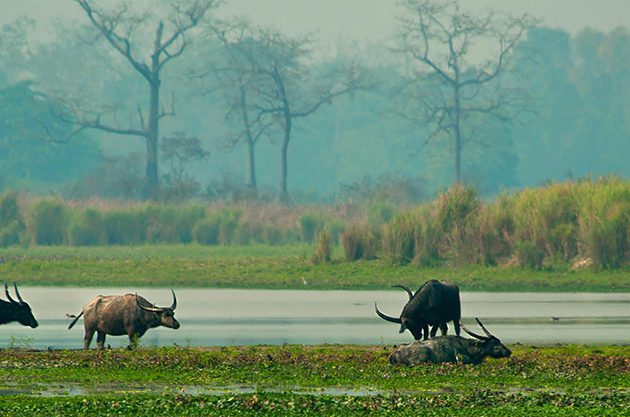 The 200-odd kilometre drive took us close to four hours and, by the end of it, I was glad to check in to the magnificent Diphlu River Lodge, a rustic cottage accommodation which was only separated from the park by a boundary river. The lodge arranged for our jeep safaris through the 430-square-kilometre park, with experienced guides who were quick to sight animal footprints.
The 200-odd kilometre drive took us close to four hours and, by the end of it, I was glad to check in to the magnificent Diphlu River Lodge, a rustic cottage accommodation which was only separated from the park by a boundary river. The lodge arranged for our jeep safaris through the 430-square-kilometre park, with experienced guides who were quick to sight animal footprints.
It was 5am when I set off on my first safari through the park, eager to spot my first one-horned rhino. Having been to numerous national parks in Maharashtra and Rajasthan, it wasn’t the tiger but the rhino that I was after. “Rhinos are intelligent animals,” my guide, Brahma, told me. “In the monsoon, when the park gets flooded, the mother often carries her calves on her back and deposits them to the forest guards.” Early mornings and late afternoons were the best times to spot the rhinos, as I well knew – the harsh sunlight in the day made them uncomfortable. As we slowly patrolled the park, searching for the elusive animal amid the tall grass (in some places even taller than an elephant), I was delighted to spot an assortment of deer, a herd of elephants, even a leopard far off on a tree. But the rhino remained missing. Tired and disappointed, I returned to my lodge two hours later, where the delicious food was the only thing that could cheer me up from my failed mission.
“I’d try again this afternoon, this time on elephant back,” I told myself. At 2.30pm, I set off on my second safari and climbed atop my ride for the evening once I was into the park. Brahma pointed me towards the smell of carcass, indicating that a tiger was near, but I didn’t bat an eyelid, my thoughts only focused on looking for the rhino. Though it can be slow and intimidating for some, I’d recommend an elephant safari over a jeep one, simply because the animal can traverse the thickly forested areas better than a jeep can. On the way, I came across langurs, gibbons and some richly coloured birds that made my jaw drop. But the rhino still didn’t show itself.
“Let’s look for the tiger,” Brahma suggested. Dejected by the rhino no-show, I agreed. As we went deeper into the forest towards the smell of the carcass, the jungle became eerily quiet, the only sounds to be heard being the far-off monkey warning cries. Then, just as suddenly, we saw them – two little tiger cubs hugging each other and sitting scared near the dead body of a sambar which lay around a small pond. “Stay quiet,” warned Brahma. “The mother will be near.” Sure enough, we saw her half a minute later, walking up to her cubs before all three attacked the hapless deer and lay by the water. We watched the scene for 10 minutes before we decided to move on.
I had almost given up hope as we rode towards our jeep of spotting a rhino that day. But whether it was because of Brahma’s determination, my prayers to Kamakhya, or the right time of the day – it was right then that we heard the trampling of branches close by. “This could be it,” said Brahma, excitedly. With my heart in my mouth, I let my eyes wander towards the disturbances and kept my ears trained to the sounds. And then there they were – two giant grey animals, their hide covered in “armour”, their horns neatly set between their eyes.
What a sight they were! Rooted to their spots and bending down to chomp on some grass, these 2,000-kilo herbivore behemoths were unlike any other animal I had seen. And just like that I had done it – ticked off a top 10 in my travel bucket list. As dusk gave way to night-time, I watched a local bihu (Assamese folk dance) performance by the fire, satisfied with my wildlife spotting.
I was a content girl as I made my way to the town of Jorhat the next day. It was time to visit Assam’s tea capital and taste some delicious infusions. The 115-kilometre-long drive was comfortable and tranquil in spite of being uphill. Ninety minutes later, I arrived at my next accommodation, Burra Sahib’s Bungalow – a beautiful house set amid a sprawling tea estate. With quaint colonial architecture, this bungalow evoked a sense of a time gone by. Built between 1900 and 1905, it was owned by a British manager and his “memsahib”, who took care of the tea plantations surrounding it. Now a Welcom-Heritage hotel, the property featured an 18-hole golf course, swimming pool and wellness centre.
Assam is responsible for 60 percent of the country’s tea production and is the world’s largest tea-growing region – and seeing the tea plantation workers picking tea leaves all day, itMwas easy to see why. The abundant rainfall, temperate climate and hilly topography is the perfect combination to grow tea. Pickers worked 10-12 hours a day picking out the tea leaves and then segregating them according to quality. Tea in Assam is usually black with a unique, malty taste and is generally had as a breakfast tea. However, smaller quantities of green and white are also grown here.
After spending an afternoon watching the workers pick tea, I decided to go and see how it was roasted. Once that was done came my favourite part – the tea tasting. Trying out these deliciously fresh teas with some scrumptious snacks topped off a super enjoyable day.
Another fitful night’s sleep later, I decided to explore the town of Jorhat and the nearby Majuli island, a large river island on the Brahmaputra that’s also a World Natural Heritage Site. As my last day in Assam drew to a close, I picked up some flavourful tea and local jewellery to take back, a reminder of my wonderful time in the first of the “seven sister” states.
TRAVEL TIME
From New Delhi 2 hours 20 mins
From Mumbai 3 hours
From Chennai 3 hours
From Kolkata 1 hour 15 mins
HOTELS
Diphlu River Lodge
Burra Sahib’s Bungalow
Vivanta By Taj Guwahati
CLIMATE
The climate of Assam is typically ‘tropical monsoon rainfall’ type, with high levels of humidity and heavy rainfall. People here enjoy a moderate climate
all throughout the year, with warm summers and mild winters. More information on Assam can be found at Assam Tourism & Incredible India.
Subscribe to the latest edition now by clicking here.
If you would like to comment on this story or anything else you have seen on World Travel Magazine, head over to our Facebook page or message us on Twitter.
And if you liked this story, subscribe to our bi-monthly World Travel Magazine, a handpicked selection of editorial features and stories from Global Destinations, Inspire Me, Insider, Style File, Wellness & Travel, City Travel, Suite Life, At Leisure, Short Breaks and much more.


